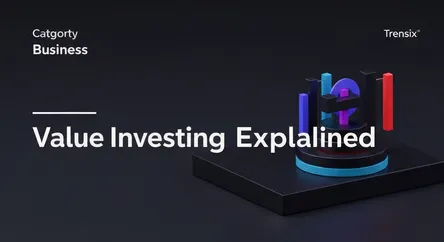Business
Value Investing Explained

Discover value investing, the time-tested strategy of buying stocks for less than their intrinsic worth, famously used by Warren Buffett.
What is it?
Value investing is an investment strategy that involves picking stocks that appear to be trading for less than their intrinsic or book value. Value investors actively seek out stocks they believe the market is underestimating. The core principle, championed by Benjamin Graham and famously practiced by his student Warren Buffett, is the concept of a "margin of safety"—buying a security at a significant discount to its underlying value to protect against downside risk. This approach prioritizes a company's fundamental strengths, such as earnings, revenue, and assets, over market sentiment or speculative trends.
Why is it trending?
In times of market volatility and economic uncertainty, investors often gravitate towards strategies perceived as more stable and less risky. Value investing experiences a resurgence when high-growth or "meme" stocks falter, reminding investors of the importance of fundamentals. As interest rates rise and economic conditions tighten, the speculative fervor often cools, and the disciplined, research-intensive approach of value investing becomes more appealing. It represents a return to a proven, long-term wealth-building philosophy over short-term speculative gains.
How does it affect people?
Value investing encourages individuals to become more informed and patient investors rather than reactive traders. It empowers people by teaching them to analyze company financial statements and make decisions based on diligent research, not market hype. For retail investors, this can lead to more disciplined saving habits and a focus on long-term financial security, such as retirement planning. By potentially avoiding speculative bubbles and investing in solid, undervalued businesses, individuals can build more resilient portfolios and achieve sustainable wealth over time.